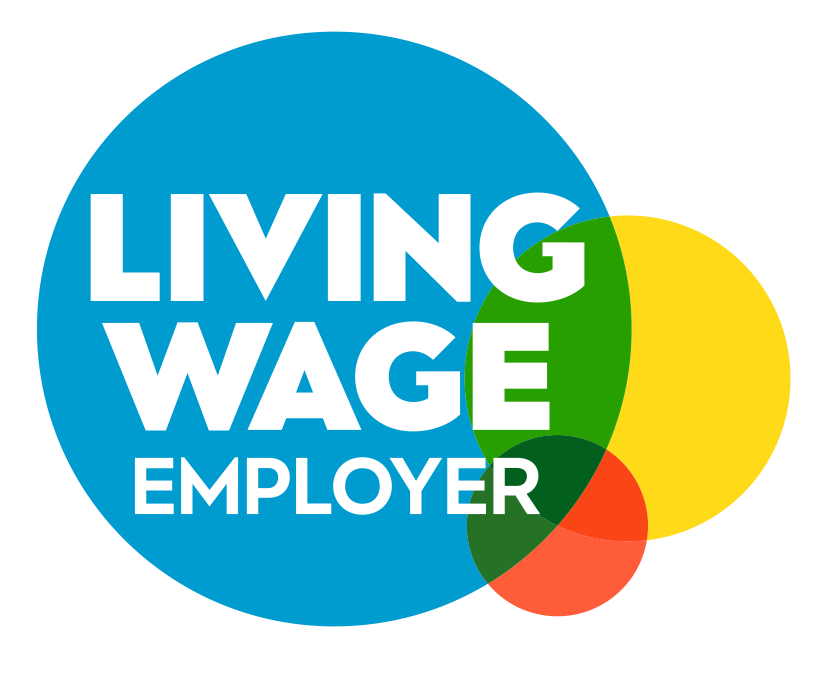Ah, the good ol' days. When competitor price research involved lurking in aisles with a notepad.
Now, thanks to the wonders of technology (and maybe a few mischievous bots), price scraping has become the norm.
Opinions on price scraping are mixed, however in recent years it’s become apparent that the questionable practice is harmful - even malicious. Effective price scraping allows competitors to manipulate the market and gain an unfair advantage by undercutting legitimate rivals.
Here, we’ll run you through everything you need to know about price scraping, and the actionable steps you can take to mitigate it. We’ll cover:
- What price scraping is, and how it works
- The rise of price scraping, and why it’s a serious challenge
- Strategies to combat price scraping
- Price scraping FAQs
What is price scraping?
Price scraping refers to the automated extraction of pricing data from websites. Fraudsters (often competitors) employ bots or web crawlers to scour the internet, collecting product information (particularly prices) in bulk from online stores.
This data can then be unpacked and analyzed, allowing the scrapers to adapt their own pricing strategies and precisely undercut competitors.

Why is price scraping a challenge?
While pricing information is out there and available to anyone, price scrapers cross an ethical line by aggressively undercutting competitors’ pricing and growth strategies.
This has a ripple effect across all online marketplaces. Market disruption, price wars, and eroded profits follow, which can often result in the downfall of businesses. No marketplace is particularly safe from price scraping, however the most common victims are the marketplaces who don’t have the resources or knowhow to fight back.
New, emerging marketplaces often turn to price scraping as a shady way to immediately attract price-sensitive customers. They prey on established players, gathering information and crafting the perfect strategy to undermine businesses at every step.
It doesn’t end there. Price scraping poses a significant challenge for all kinds of marketplaces on multiple fronts:
- Eroded Competitive Advantage: By consistently monitoring competitor pricing, scrapers enable businesses to react swiftly and undercut prices on a dime, diminishing the hard-earned competitive advantage established through pricing strategies.
- Skewed Market Analysis: When price scraping runs rampant, market analytics based on scraped data becomes unreliable. This can lead to inaccurate assessments of market trends and competitor behavior, hindering effective marketing choices and kneecapping strategy.
- Undermined Pricing Strategies: Dynamic pricing strategies, where prices fluctuate based on factors like demand and competitor activity, suddenly become vulnerable and exploitable. By constantly monitoring price changes, scrapers effectively negate the effectiveness of strategies like these.
- Reduced Site Performance: Websites subjected to excessive scraping experience a strain on resources. This can lead to slower loading times, impacting user experience and pushing customers away from your site, leading to revenue loss.
- Disrupted Site Analytics: Aside from slower loading times, price scraping can negatively impact website analytics. Those who regularly fall victim to scrapers see higher bounce rates, cart abandonment rates, and other negative site metrics.
- Legal and Ethical Concerns: The legitimacy of price scraping can be a legal gray area, depending on the website's terms of service and local regulations. Additionally, the ethical implications of scraping data without authorization raise concerns.
How does price scraping work?
Scraper bots are nefarious in their sneakiness. In order to scrape pricing information in bulk, they’ll typically function in the following way:
- Target Selection: The scraper identifies a target website with desired pricing data. This could be an e-commerce competitor or a general product listing platform.
- Data Extraction: The bot navigates the website using pre-programmed instructions, often mimicking human behavior to avoid detection.
- Price Identification: When the bot finds the product page, the scraper locates and extracts the price information using specific algorithms tailored to identify price tags within the website's code.
- Data Aggregation: The extracted price data is sorted and stored for further analysis or integration into automated pricing systems.
What are the common techniques used by scrapers?
Scrapers use a variety of methods, from basic to more complex, to extract pricing data from websites. Here's a breakdown of some common techniques:
- HTML Parsing: This involves sifting through a website's code to find and extract specific elements containing pricing information. It's a common, programmatic way to gather data directly from the website's underlying structure.
- Headless Browsing - A trick for bypassing anti-scraping measures: Special tools can use headless browsers (which act like browsers without a physical window) to mimic a user interacting with a website. This allows the tool to navigate pages and extract pricing information - even if the website has defenses against scraping.
- Proxy Rotation - Staying hidden while scraping: To avoid being blocked or detected based on their IP address, scrapers might use proxy networks. By constantly switching IP addresses, they can mask their scraping activity and gather data more efficiently.
Who is at risk from price scraping?
Price scraping poses a threat to all kinds of businesses, yet some are more at risk than others. Here’s a breakdown of who feels the sting the most:
High-risk businesses:
- E-commerce Retailers: Considering everything we’ve just spoken about, you might have already guessed - but e-commerce is the bullseye for price scrapers. Online stores with constantly fluctuating prices or those selling similar products across different retailers are usually the primary targets.
- Ticketing Platforms: Event tickets and concert prices are susceptible to scraping by ticket resellers, who can then exploit price fluctuations.
- Travel and Hospitality Industry: Hotel rates, flight prices, and holiday packages are heavily scraped by competitors and price comparison websites.
Other vulnerable businesses:
- Financial Services: Price scraping can affect businesses offering financial products like mortgages, loans, or investment options.
- Subscription Services: Companies offering subscription plans for software, media, or other services can be impacted if competitors use scraped data to undercut their pricing.
Generally, any business that relies heavily on competitive pricing or has a dynamic pricing strategy is at risk from price scraping.
Even businesses that aren't directly competing on price can be affected. Scraped data can be used to inform competitor marketing strategies or product development decisions, indirectly impacting the market.
How to combat the threat of price scraping
While completely eliminating price scraping might not be feasible without proper protection, marketers can employ several strategies to mitigate its impact:
- Clear Terms of Service: Clearly define acceptable website usage within the terms of service (TOS). Explicitly prohibit scraping activities and outline consequences for violation. This may go some way to deter some (but not all) scrapers.
- Advanced Anti-Bot Measures: Use CAPTCHAs, honeypots (fake data traps), and IP address throttling to deter automated bots. These solutions help distinguish human users from sneaky bots - just keep in mind that scraper bots are smarter than ever, and some may get past these blockers.
- Dynamic Content Delivery: Implement techniques that dynamically generate product pages, making it difficult for bots to consistently locate price information.
- Legal Action: In cases of blatant scraping that violates TOS or local regulations, consider pursuing legal action to protect your intellectual property. Unfortunately, some violators are particularly good at hiding their identity, making this a difficult task.
Beyond price scraping: A holistic approach
There’s no getting away from it - scraping is here to stay. There will always be those willing to cross the line and use unethical practices to gain a competitive advantage.
This highlights the need for a comprehensive approach to online pricing strategies. Consider the following strategies and practices to further combat those cheeky bots:
- Value-Based Pricing: Focus on the value proposition of your products and services. Communicate the unique benefits your offerings provide to justify pricing beyond simply competing on the lowest cost.
- Data-Driven Optimization: Utilize website analytics to understand customer behavior and adjust pricing based on real user data rather than solely relying on scraped competitor information.
- Customer Segmentation: Implement targeted pricing strategies that cater to different customer segments with varying price sensitivities.
- Regular Price Reviews: Evaluate pricing strategies regularly and adapt to market fluctuations and evolving customer needs.
How Lunio protects against price scrapers
Price scraping is a growing challenge for marketers, but it shouldn't cripple your pricing strategy.
Lunio works to protect websites against automated bot scrapers - meaning any scrapers that hit product landing pages are detected and added to an exclusion audience, or automatically IP blocked.
With 1 in 12 clicks online being fake or fraudulent, Lunio goes a step further in protecting all your ad spend from bots and invalid traffic. This could prevent upwards of 20% of your ad spend falling victim to bots and other sources of invalid traffic.
By using the right invalid traffic prevention software combined with value-driven pricing, businesses can build resilience against scraping and maintain control over their pricing narrative.
Get a 14-day no-obligation traffic audit with Lunio to see how much ad spend you’re wasting, and discover how we can help you mitigate price scraping.
Price scraping FAQs
Is price scraping legal?
The legality of price scraping is, unfortunately, a very gray area. Generally speaking, it’s more unethical than illegal - however, it does cross the line and becomes illegal when it directly violates the terms and conditions of a website.
Additionally, when scraping disrupts website security or performance, it is considered a malicious activity - meaning business are able to take legal action, if they can track down the fraudsters committing price scraping.
What does price scraping achieve?
Price scraping isn’t just used for getting a list of product prices - it’s also used to uncover a variety of pricing information that can influence strategy and help scrapers undermine competition. This includes:
- MAP (minimum advertised price) monitoring
- Competitive pricing intelligence
- Dynamic pricing
- Pricing strategy optimization
- Pricing trend identification
How does price scraping impact fair competition?
Price scraping inherently gives the scraper an unfair advantage. It’s a bit like a cheat code - with a few clicks, all your competitor pricing is laid out in front of you. This enables scrapers to undermine competitor pricing strategies and undercut them in an instant.
Typically, scraping impacts smaller businesses the most. Big businesses who use the unethical practice can scour the market, then sell at lower prices whilst maintaining profits. Smaller businesses often struggle to maintain their profit margins trying to keep up.
Say goodbye to wasted ad spend
Discover how Lunio can help you eliminate invalid ad clicks and maximize paid media performance





.png)



.png)





